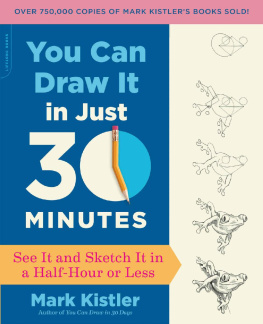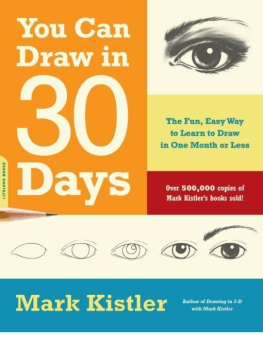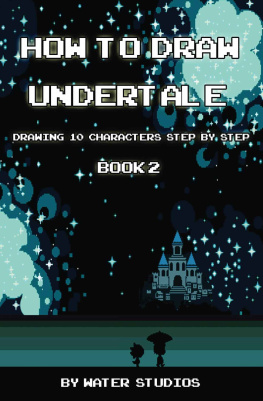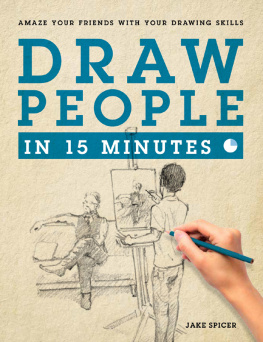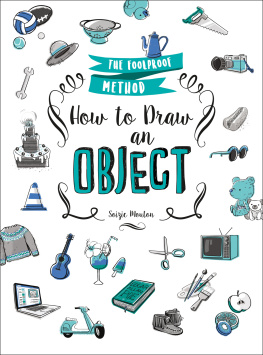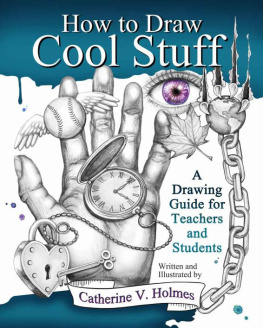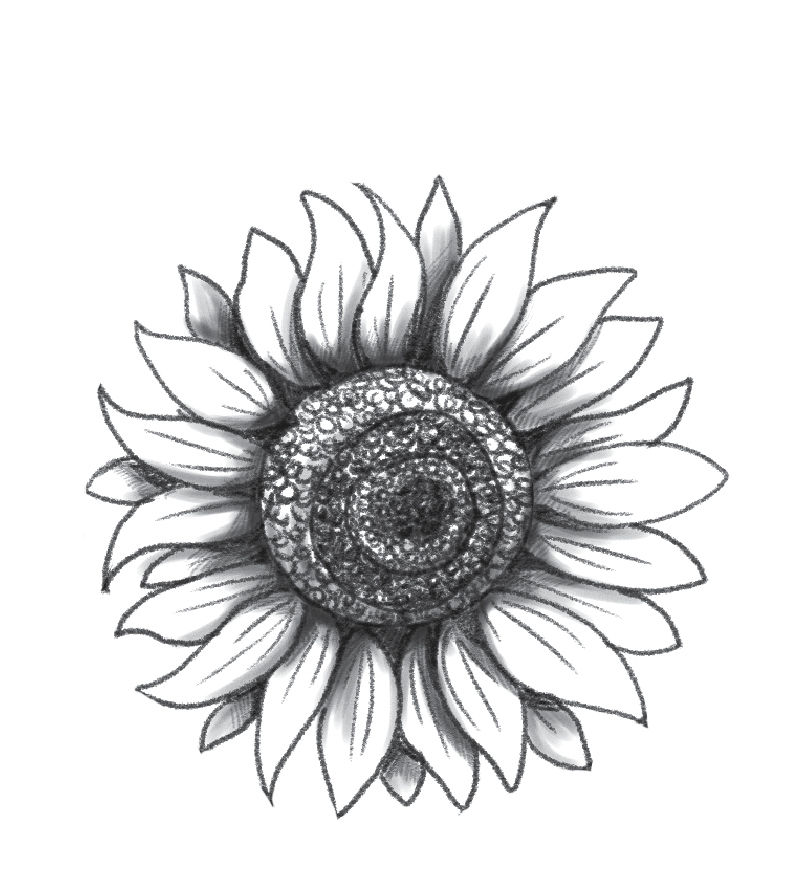Many of the designations used by manufacturers and sellers to distinguish their products are claimed as trademarks. Where those designations appear in this book and Da Capo Press was aware of a trademark claim, the designations have been printed in initial capital letters.
Copyright 2017 by Mark Kistler
Wonderful guest art provided with the kind permission of: Siera Pritikin (boot) and Rod Thornton (tree frog).
All rights reserved. No part of this publication may be reproduced, stored in a retrieval system, or transmitted, in any form or by any means, electronic, mechanical, photocopying, recording, or otherwise, without the prior written permission of the publisher. Printed in the United States of America. For information, address Da Capo Press, 53 State Street, 9th fl oor, Boston, MA 02109.
Designed by Trish Wilkinson
Cataloging-in-Publication data for this book is available from the Library of Congress.
First Da Capo Press edition 2017
ISBN: 978-0-7382-1862-5 (paperback)
ISBN: 978-0-7382-1863-2 (e-book)
Published by Da Capo Press, an imprint of Perseus Books, LLC, a subsidiary of Hachette Book Group, Inc.
www.dacapopress.com
Da Capo Press books are available at special discounts for bulk purchases in the U.S. by corporations, institutions, and other organizations. For more information, please contact the Special Markets Department at Perseus Books, 2300 Chestnut Street, Suite 200, Philadelphia, PA, 19103, or call (800) 810-4145, ext. 5000, or e-mail special.markets@perseusbooks.com.
E3-20170519-JV-PC
Contents
Navigation
For Joyce Kistler and Harry Schurch:
my parents and personal heroes.
D rawing can be terrifying.
Ive taught millions of people to draw, and I see it all the time: the empty white page breeds pencil paralysis. Why? We dont know where to start and we fear getting it wrong. Yet once I get my students to begin, to just touch pencil to paper, most of the time they fall in love with drawing.
Not only that, but people also assume that learning to draw involves a huge time commitment. They envision spending hours in front of a bowl of fruit or setting aside whole afternoons for sketching at an art museum. Certainly you could do these things. But you dont need a big block of time or any special location to get going.
Thats why I decided to create a system for anyoneyes, that means you!to quickly craft a realistic drawing. To draw anywhere, whenever the urge strikes, and to finish in a half-hour or less. Even if youre brand-new to drawing!
Will such fast work be perfect? Of course not. But the more you practice, the less nervous youll feel about the outcome andsurprise!your drawings will improve. My own drawings often dont turn out the way I planned; I recycle a lot of paper full of unsuccessful scribbles. Ive been drawing for a lifetime, and I still learn every day. But I dont worry about it, and I hope, more than anything, that You Can Draw It in Just 30 Minutes frees you from drawing anxiety and helps you have fun and enjoy the process of learning to draw.
Here are the three simple elements that make this method work:
1. THE BLUEPRINT
Using my 30-minute system, during the first few minutes of each drawing lesson youll create a blueprint of the drawing. In this phase I guide you to see and sketch not the object itself but the basic geometric shapes comprising itshapes like triangles, rectangles, circles, and squares.
My plan is wily. I want to move you quickly away from drawing on that daunting blank page and into refining the shapes youve drawn. I want you out of your head and into the art zone. Thats a fun place to be. Thats where creativity flourishes. Self-consciousness and self-doubt are the creativity killers my 30-minute system is designed to help you break through.
Once your time is up and your drawing is down, polish itor erase it, or scribble over it, or color it, or crumple it. (I recommend you keep it, even if you hate it. Come back to it after youve completed a few more drawingsyoull be amazed to see how far youve come!)
2. THE NEED FOR SPEED
Nothing breaks through an artists block like a deadline, even if its one you impose on yourself. So for each step of the lessons in this book I include recommended time limitsfive- or ten-minute segments. Yes, I want you to set an alarm while you draw. Not kidding! Haste makes no waste if it means you get a drawing completed, no matter what it looks like.
If you run out of time in a given phase, go to the next step.
I encourage you to try each 30-minute drawing several times. Eventually you can take your time with these sketches if you want to. But the first time, go fast! So fast youre running far ahead of that inner voice telling you, You cant do this.
3. THE HACK
Drawing fast and starting with a simple blueprint are two key parts of my devious plan to get you drawing and enjoying it (cue maniacal laugh). The third essential element is the hackan easy trick to help you more accurately place parts of your drawings on the page.
The word hack may bring to your mind a person who produces pretty crummy work or the act of circumventing a computers security system. Recently, though, the term is used to describe clever and quick workarounds for lifes sticky problems, like how to slice an onion without crying (freeze it for ten minutes first!). This book is full of drawing hacks. In every drawing lesson I suggest shortcuts you can take, like tracing your pocket change to draw a circle, using the edge of your credit card to get your lines straight, or tracing your pinky or thumb to draw an oval.
My friends, this isnt cheating. Artists have used tools and aids for millennia, from the apprentices hired by Da Vinci through Disney and beyond, to the projectors used by Warhol, and certainly including the computer drawing and animation tools so readily available to all of us today. Something as simple as tracing a coffee cup to draw a circle is a tool, not a cheat. It will help you learn to translate what you see more accurately to the paper in the many freehand drawings I expect youll be doing in the future. And even if youre never able to draw a circle without that mug, you dont have to worry about it and instead can free your mind to color creatively or embellish.
WHAT ABOUT CREATIVITY? ORIGINALITY?
In thirty years of teaching drawing the most common criticism I get is, You teach people to copy what youre doing! I can just hear the naysayers: Now youre using hacks! Wheres the creativity in that? My reply: take a lesson with me and youll see. Success in drawing now inspires creativity later.
Of course, to become proficient youll need to practice. But I believe the prevailing methods of teaching drawing generate an awful lot of abandoned efforts in childhood and artistic blocks later in life. Many teachers still follow the method taught by Kimon Nicolaides. In his 1938 book The Natural Way to Draw Nicolaides says, The sooner you make your first 5,000 mistakes, the sooner youll learn to correct them. In reality, I think that only people with a rare, natural sense of how to draw what they see benefit from the trial-and-error method. They already have the self-reliance the rest of us are trying to develop. I love the Nicolaides book, but I believe people who experience some bit of early success and a sense of mastery tend to come back time and again to creative endeavors. I dont mean a trophy-for-every-player kind of reward, just enough of a recognizable drawing to feel encouraged to keep trying and build some resilience.

